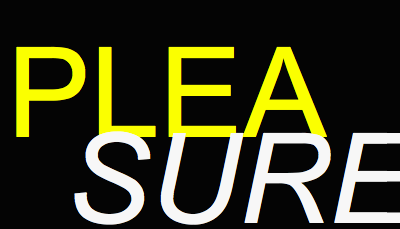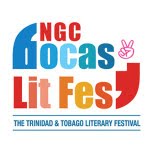
APT (ed. Nicholas Laughlin)
All I Can Say Is What I Can Say / What I Can Say Is All I Can Say (by Nicholas Laughlin)
All I Can Say Is What I Can Say / What I Can Say Is All I Can Say (by Nicholas Laughlin)
Neither Here Nor There (by Alicia Milne)
Pinky & Emigrante (by Alicia Milne and Luis Vasquez La Roche)
Pinky & Emigrante (by Alicia Milne and Luis Vasquez La Roche)
*
THAT morning, I was not expecting it. An A4 envelope addressed to me: too large to be a bill or a simple letter, too small to be one of those unaddressed spam magazines. The return address is written in a familiar but not immediately recognisable handwriting (how little we see each other's handwriting in these days of emails, blogs, Facebook!) I do the usual hold up to the light and check test to ascertain if anything explosive is inside, then carefully open it. A small note:
APT is a found journal. Its form is its content and its content is its form.
The October 2011 issue of APT is made of pages torn more or less at random from a 2009-2010 Trinidad and Tobago telephone directory.
It is titled REPUBLIC.
Nicholas Laughlin, editor
Inside the envelope are seven, non-consecutive, pages from the telephone directory, folded into a booklet form with a stapled spine. APT is stamped near the top right-hand corner, a date and issue number, stamped beneath: 01 // October 2011. The pages seemed ripped, neatly but in a way that, for me, brings attention to the violence required to rip a page out of a book. The numbers on one page were persons with the surname George, beginning with George-Hutchinson Sybil 648-4155.
This feels like receiving an intriguing puzzle. And all over I seek out and think I find clues. APT, anagram for TAP, PAT. REPUBLIC is in bold, as is APT. Could this be more than just a stylistic touch? Combine the words and play around. Hundreds of words emerge between them including possibilities like: blur, clip, cut, club, ripe. The ripped pages of the directory bring attention to the feel and texture of things: they are light yet oddly heavy. The pages are the most functional thing you can imagine and are not meant as art but if you LOOK at them you seek out how they are ordered: the lines of text; the seeming juxtaposition of strangers. The entire exercise is sensory: a reminder to look, see, feel, smell, think. This is a fine example of the kind of thing that is happening in what is an increasing trend in Trinidad: excitingly strange art is coming in the mail.
It's not really surprising. Decades after oil and gas booms, the State has demonstrated that it has no real concern with art or spaces for it. Art is used, but not preserved. Into this there are new spaces emerging. Some are taking things - literally - into their own hands. Art has gone private, underground. One off-shoot: mail as art.
The idea of mail as art is a world-wide development given that the postal services are not as frequently used today as they once were. We are now a little bit crazy over e-cards, emails, online chat and video, social networks, blogs and comment forums. Forms to apply for things are online, transactions are downloaded and uploaded. Of course there are some things that still come in the mail: bills, formal letters and bank statements (though increasingly you can opt out of these). So when something as simple as a letter or a note comes in the mail, it is almost a thrill.
Laughlin, an administrator of Alice Yard and editor of the Caribbean Review of Books, knows a thing or two about finding new spaces and the thrill of correspondence. The theme is a key concern in his poetry and a natural extension of TOWN the literary journal. A few weeks after APT arrives there is another envelop waiting for me in the mail. Smaller, with a bit of scotch-tape securing its contents. Two small items are inside.
The items are two cadmium blue postcards. One reads: "ALL I CAN SAY IS WHAT I CAN SAY" ; another "WHAT I CAN SAY IS ALL I CAN SAY". The text is in white in a sans serif font. On the reverse of one card is that familiar handwriting from before: "AND SOME DAYS I SEEM TO HAVE NOTHING AT ALL TO SAY. -" The other card, a simple signature and date: "N. 3 Dec. 2011."
A few months later, more. From a different source.
A white envelop with a stark black font. The letters P & E and my name and address. Inside a small booklet, one side Emigrante the other Pinky. Three flyers to post on walls as I please. This is the work of Alicia Milne and Luis Vasquez La Roche who have mailed out, in a personalised kind of way, zines. (I have written a blurb for this project.)
More clues: "We place our work in the streets and curate encounters with the public. Existing in the landscape, the work no longer belongs to its creators, it becomes art for all," a notice reads. Then, images playing on ideas of HE v. SHE, part and whole, pleasure and pain, screaming and silence. Physical education (PE) comes to mind: play. Both are artists who produce work interrogating self and what it means to place the self across the boundaries letters normally transgress.
Exploring Milne's website, I encounter her zine Neither Here Nor There. The artist mails out a copy to whoever emails her asking for it.
A few days later, it arrives in the smallest of envelops. Inside are words, maps and drawings of fictional and real places. I can decipher the following phrases throughout the zine: to somewhere; Point A Point B Point C Point D Point E; no scale available, dark-ness, the constant flow; Pass through time; the clusters descend, scale variable; a fraidy place is always uncertain; sometimes north, sometimes south; nice, nicer; straight straight straight straight; and still I feel uncertain.
Where the self is; the idea of travel and of order; of mapping the terrain; of moving between motions, states, emotions. Somehow all of this comes to mind. It's the kind of thing possible with art that comes in the mail. There is so much more of it out there, too.




































